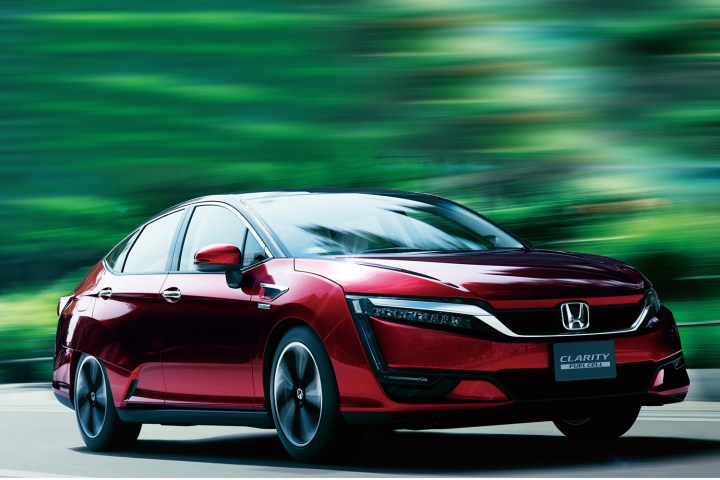
That speculation proved true. Honda confirmed today that both models, officially known as the Clarity Electric and Clarity Plug-In Hybrid, will go on sale next year alongside the Clarity Fuel Cell, which will launch in certain parts of California later this year.
Honda expects the Clarity Plug-In Hybrid to be the volume seller, which makes sense given the limited infrastructure available for battery-electric and hydrogen fuel-cell cars. The company has already discussed this model a bit, confirming a range of 40 miles on electric power, and noting that the new model will be able to operate on electric power at higher speeds than the previous Accord Plug-In Hybrid.
The Clarity will also be more widely available than the Accord, which was never intended to be a volume seller. Honda says the Clarity Plug-In Hybrid will be available in all 50 states, but wouldn’t say the same for the Clarity Electric. The Clarity Fuel Cell will only be sold in California for the time being, because the Golden State is the only one with a significant network of hydrogen stations. It will likely be the most expensive of the three, with a price tag of around $60,000.
All three variants will share exterior styling, although there might be some slight tweaks to differentiate fuel-cell, battery, and plug-in hybrid versions. Honda says each will be offered with its Display Audio system, including Apple CarPlay and Android Auto compatibility, and the Honda Sensing suite of safety features.
Offering three green powertrains in the same car allows Honda to cut costs. It’s a much less expensive route than developing platforms for three models that probably won’t sell in very large volumes individually. While Honda is the first to try this tactic with this combination of powertrains, Hyundai is doing something similar with its 2017 Ioniq, which will be sold as a hybrid, plug-in hybrid, and all-electric car.


